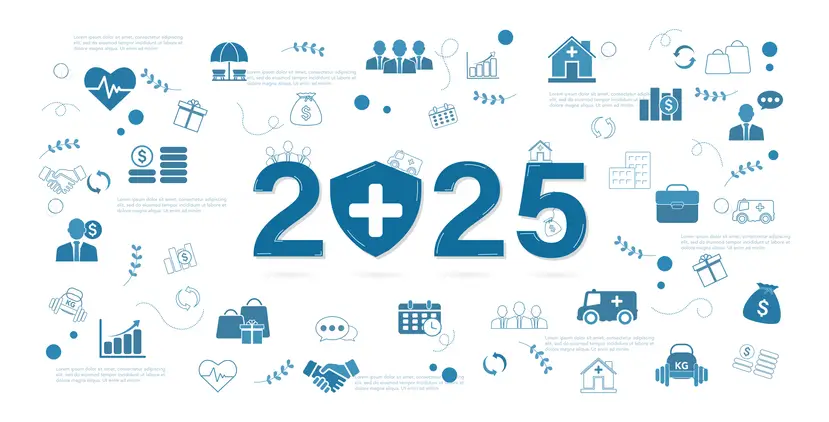Workplace safety is evolving faster than ever to overcome greater challenges that industries are facing. From AI predicting hazards to firefighters battling EV battery infernos, technological development is here to respond to tomorrow’s risk in real time. Let’s explore the recent tech innovations and safety protocols. Learn about what unusual safety topics and measures organizations are opting for and how they are bringing about a huge change.
Rare Topics To Follow In 2025
Here are some uncommon safety topics you should be mindful of following to stay updated about the safety measures and procedures that established companies and organizations are practicing.
AI and Workplace Safety
Workplace safety is not only associated with human vigilance. It’s now more about intelligent systems that can see the danger before it happens. The predictive measures taken through Artificial Intelligence are shaping the security of workers. According to a Gartner study, by 2025, artificial intelligence is projected to prevent 1 in 4 industrial accidents. AI will be providing real-time video feeds to detect unsafe behaviors like missing PPE or risky shortcuts. It will help with equipment sensor data, predicting machine failures before they cause injuries. Moreover, with the use of technology, there will be fewer errors and mishaps.
Amazon’s AI-powered cameras have successfully reduced forklift collisions by 48% in their warehouses by instantly alerting operators to blind spots and pedestrian traffic.
AI’s greatest impact is its ability to learn from close calls, unlike traditional safety programs that rely on after-the-fact incident reports. These systems identify micro-trends across various facilities. Newer tech, including wearable AI, autonomous inspection drones, and Generative AI, are some trends one must follow.
Electric Vehicle (EV) Fire Risks
Creating a new generation of fire hazards, the electric vehicle (EV) defies conventional emergency response. Where gasoline fires smother in minutes, these lithium-ion battery fires require 6,000+ gallons of water (NFPA), which is enough to fill a backyard swimming pool. They may reignite days after initial suppression. Here are some alarming firefighting challenges for you to ponder.
- Tesla’s emergency response guide reveals that some battery fires need continuous water cooling for 24+ hours
- Underground parking garage fires involving EVs have required toxic runoff containment systems
- 72% of U.S. fire departments report being under-equipped for EV fires
Apart from these, a damaged lithium-ion battery can self-ignite, even if it’s not charged. Saltwater flooding from hurricanes has been shown to trigger delayed thermal runaway reactions three weeks post-exposure, while minor collisions can invisibly compromise battery integrity, leaving repair technicians unaware of impending danger. However, companies and authorities are taking key measures to combat the dangers. Porsche is pioneering solid-state batteries with 80% lower flammability, while the FDNY has deployed mobile immersion tanks to contain burning EVs.
Augmented Reality (AR) in Safety Training
Augmented Reality is making interactive learning possible and easier for employers. Deloitte’s report shows 75% better retention of safety protocols by using AR learning tools. They provided both visual and kinesthetic learning. Apart from this, AR allows workers to practice high-risk scenarios in a controlled, virtual environment before ever facing real-world dangers.
Extreme Weather Work Safety
Environmental threats are taking over an important spot in the safety training models of organizations around the world. It may sound like an uncommon safety topic, but it has become an important concern. Heatstroke kills over 2,000 U.S. workers annually, with agricultural and construction laborers accounting for 75% of fatalities.
Nanotechnology Hazards
Professionals, including lab techs, battery plant workers, and textile workers, are at a high risk from Nanotechnology hazards. Half of nanomaterial workers report unexplained respiratory issues. Where Nanotech risks expose how regulation lags behind innovation, with workers as test subjects, this becomes an Unusual safety topics that need more attention.
The Psychology of Near Misses
Near misses refer to the workplace’s most underutilized warning system. To explain it a bit, let’s ponder on these 2 scenarios:
- A toolbox slips off the scaffolding but gets caught on a safety net.
- A forklift operator jerks to a stop just inches from a pedestrian.
According to the National Safety Council, 90% of near misses go unreported. Workers fear punishment, and 68% of employees believe reporting will lead to discipline.
Cybersecurity Meets Physical Safety
Cybersecurity is one biggest concerns of organizations. It can sabotage physical safety systems. In 2023 Florida water plant hack manipulated chemical levels to dangerous concentrations. Moreover, German steel mill hackers overrode furnace controls, causing massive equipment explosions. Every year, cyber crimes cause $50B in annual damages from cyber-physical attacks, according to McKinsey.
Biohazards in Unexpected Places
Biohazards aren’t confined to labs instead, they are present anywhere in the workspaces. An office keyboard hosts 20,000x more bacteria than toilet seats. A 3D printer emits ultrafine particles similar to diesel exhaust. There is a need for organizations to combat such health hazards, like using antimicrobial work surfaces. They help reduce 90% of surface pathogens.
Safety in the Metaverse
Metaverse refers to a virtual space where people work, collaborate, and train. Employees use VR headsets to interact with the digital environment. However, it is causing serious health hazards among the workforce. 45% of VR users experience nausea, vertigo, or falls. Users immersed in VR may walk into walls, trip over cables, or strike real-world objects. Furthermore, motion controllers cause “VR elbow.”
Hidden Risks of Smart PPE
Although technological advancements are taking over industries like construction and manufacturing it can cause serious dangers as well. The use of AI-powered PPE, including helmets and other safetywears promises added safety. Sometimes, their failure modes create new and unpredictable hazards.
Wrap Up
From Nanotech to Metaverse, safety leaders have to deal with challenging hazards this 2025. They have to identify unforeseen dangers and work on solutions that can keep the employees safe while boosting the overall productivity of the organization.

